Editor’s Note
Milk is an essential part of human diet. It has been so, since times immemorial. Our ancestors around the globe, learnt to domesticate milk yielding animals and they became part of their families. As far as I know, every house had a few cows and buffaloes, and therefore, ‘dairy farming’ was not an exclusive business. Until as late as just fifty years ago, my parents were the proud owners of two buffaloes. The houses allotted to army officers were large enough for that purpose, and they even had enough land for their Pasture. And then, things changed. The process of breeding the animals and their health care became specialized and machines were invented to reduce human effort. The milk that is now produced, is pasteurised and processed and our grand children who have never seen animal being ‘milked’ believe that it comes in cartons and plastic packets!
Wg Cdr Joseph Thomas got an opportunity to visit a Dairy in the USA, and he has sent in the following report.
*
A VISIT TO “SIMPLY NATURAL” DAIRY AND CREAMERY
by
J Thomas
My grandfather and earlier generations were farmers. You could say that farming is in my blood. So when I got a chance to see a dairy farm and creamery in North Carolina, off I went.
“Simply Natural” is a dairy farm that pasteurises and bottles its milk and makes its own cream, butter and 35 flavours of ice cream. Refrigerated trucks deliver the finished products to the neighbouring towns in eastern North Carolina. They have a retail shop. And guided tours too.
Our friendly tour guide.
The owners are the Moye brothers, Neil and David. Their wives and children are fully involved in the daily operation of the farm and dairy.
Right from the beginning, the dairy has kept only Jersey cows. Other breeds, such as Holstein, produce more milk but Jerseys produce higher quality milk with higher protein, calcium and butterfat. Jerseys are also more docile, an important consideration with children roaming around.
We were herded into a trailer with wooden bench seats.
The field reserved for pregnant cows.
The family farms 3700 acres (owned plus leased). The cows are not confined on concrete all day. The cows roam, graze and lounge in the farm. The tour guide repeatedly emphasized that their “girls” are happy and, therefore, produce good quality milk.
Silage bundles tightly packed in bundles undergo fermentation.
These silage bundles was something new for me. Silage turns out to be fermented, high-moisture stored fodder which can be fed to cattle and sheep. It is usually made from grass crops, using the entire green plant (not just the grain). The farm grows corn and makes it into silage for their own use.
Tractor rolling a silage heap or “clamp” in Victoria, Australia (Photo: Wikipedia)
Silage is made either by placing cut green vegetation in a silo or pit, by piling it in a large heap and compressing it down so as to leave as little oxygen as possible and then covering it with a plastic sheet, or by wrapping large round bales tightly in plastic film.
For more details on Silage see https://en.wikipedia.org/wiki/Silage
Individual hutches for calves
When a calf is born, it is cleaned and immediately transferred to individual hutches. It is kept in the hutch for 8 – 10 weeks. I did wonder how cows and their calves could be “happy” if they are separated at birth. I did not ask any embarrassing questions. But back home, I went to the internet and searched “Hutches for Calves.” I got this reasoning from a blog written by Jennifer Heim, a dairy farm owner. “The vast majority of cows don’t give a second thought to their calf once it is out of their sight. We as dairy farmers, on the other hand, put a lot of thought into calf care.”
“Individual housing allows us to know exactly what is going in and coming out of each calf. This helps us monitor their development as well as identify illness. This may surprise you, but most of our calves can’t talk (ok, none of our calves can talk). The most common signs that a calf isn’t feeling well are loose manure, called “scours”, or lack of appetite. Individual housing allows us to know quickly and certainly which calf is scouring or not eating. We can then give that calf the extra attention and treatment that she needs.”
https://heimdairy.wordpress.com/2014/01/14/why-dairy-farmers-separate-cows-and-calves/
Close up of a hutch. Unlike in India, the calves get all the colostrum produced by the cows.
The calves are fed from a bottle. The tour guide said that the calves consider their feeder as their mother.
The calves are not fed whole milk but a “Milk Replacer.”
Milk replacer protein sources categorized by their acceptability.
Preferred |
Acceptable* |
Marginal |
|
|
|
Adapted from A Guide to Modern Milk Replacer, Bovine Alliance on Management and Nutrition, 2002.
*Acceptable when used as a partial substitute for milk protein.
Typical Milk Replacer.
There is a lot of debate on the suitability and economics of whole milk ( raw or pasteurized) as compared to milk replacer. The dairy farmers claim that milk replacer is better than having the calf drink from its mother. See https://heimdairy.wordpress.com/2014/01/14/why-dairy-farmers-separate-cows-and-calves/
A large shed fitted with fans. The cows are free to come here during hot weather. A tractor is used once a day to skim dung from the sand. The sand is replaced every year.
The cows are milked twice a day at 0500 and 1700. (Photo from company website)
The dairy has its own milk processing plant. Cream, butter and ice cream are produced. A cheese processing facility is planned. A byproduct of cheese production is whey which is a major ingredient of Milk Replacer for calves.
Interior of the retail shop
The retail shop also sells souvenirs such as Tee shirts and coffee mugs.
35 varieties of ice cream on display at the retail store. (Photo from company website)
All the ingredients being fresh, the ice cream was superb. Well worth the visit.
A play area for children.
The farm arranges birthday parties for children. The kids love the outing.
For more details see the website
http://www.simplynaturalcreamery.com
A Tailpiece…Down Memory Lane (By the editor)
As I said, we lived in large houses, built over several acres of land during the fifties. There was enough space to keep buffaloes and poultry. And therefore, we did not have to run to the ‘supermarket’ to buy milk or eggs. Given below are some pictures of those ‘good old days’
163, The Mall, Meerut Cantt (1955-57)
8, Ponappa Road, Allahabad (1957-59)
My younger brother, Surinder is having a jolly good ride on a buffalo in Meerut. This picture was taken in 1956. Surinder was a little over eleven years old.
*
A Philosophical Post Script
Have you ever visited a ‘modern’ dairy or poultry farm? If yes, have you ever looked at life from the point of view of a cow or a hen? They are domesticated animals, and therefore, we humans have the absolute right to treat them the way we like. And we exercise our authority, without any compunction.
Until about a hundred years ago, cows, buffaloes and hens/roosters were part of the households. They were tied at night, but during the day, they were sent to the fields to graze. And they were allowed to mate, when the time came. The chickens were housed in small enclosures. The hens laid eggs, and they hatched them. The roosters did their part of the job with great elegance.
And then, things changed. Modern techniques converted these miserable creatures into milk yielding and egg laying machines. The cows are now tied all day long. They are given the most appropriate feed but the breeding is done through artificial insemination. The female never sees the male of her species. Hens are even worse off. In their case, they are ‘sexed’ at birth and the male are ‘culled’. The eggs we eat are infertile; they are actually ‘vegetarian’. The females are confined to their pens where they live during their egg laying lives, and as soon as they are no longer remunerative, they are ‘tabled’. Both these creatures live at the pleasure of their owners.
The only creatures to which we are kind is the dog. And that is because they can bark.

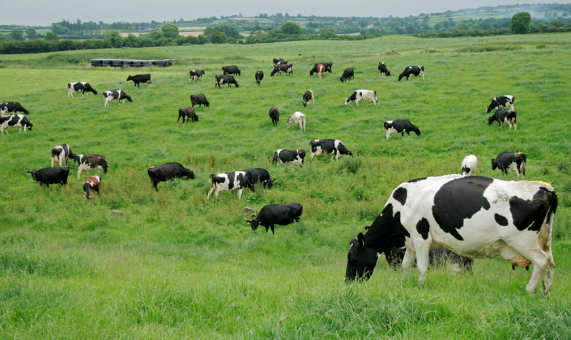

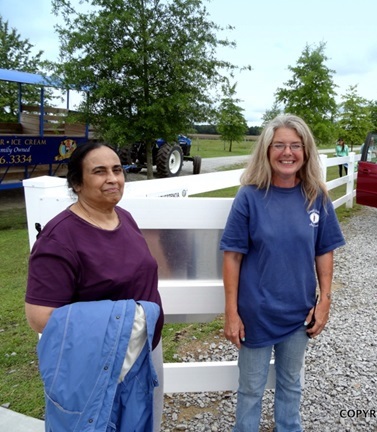
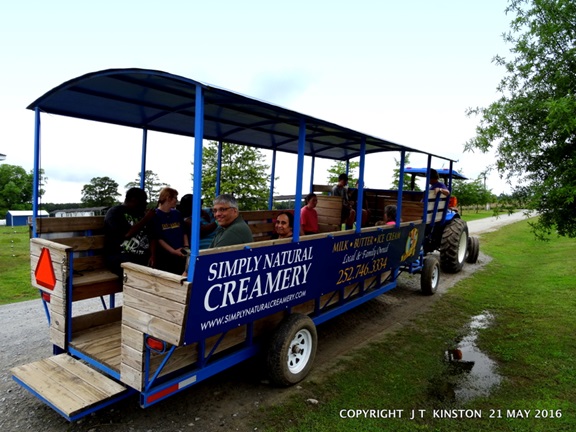
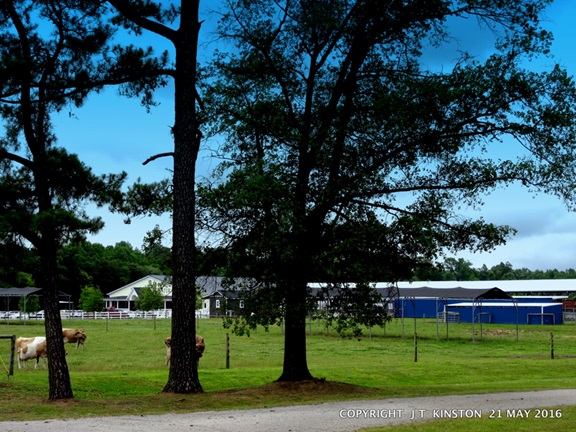
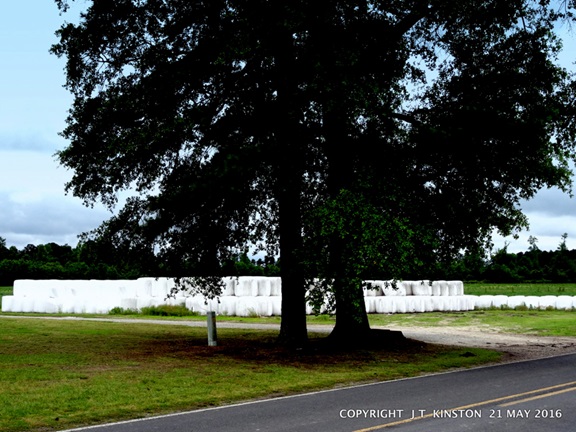
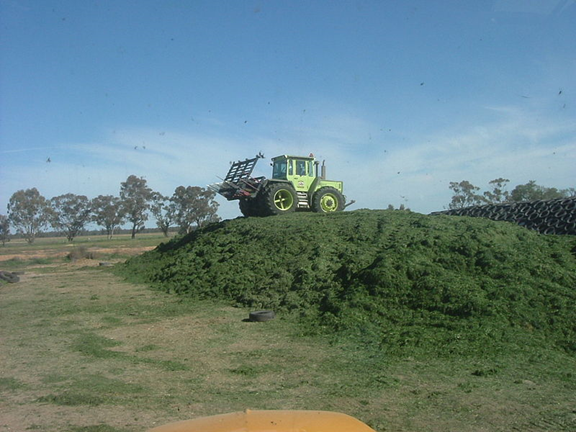
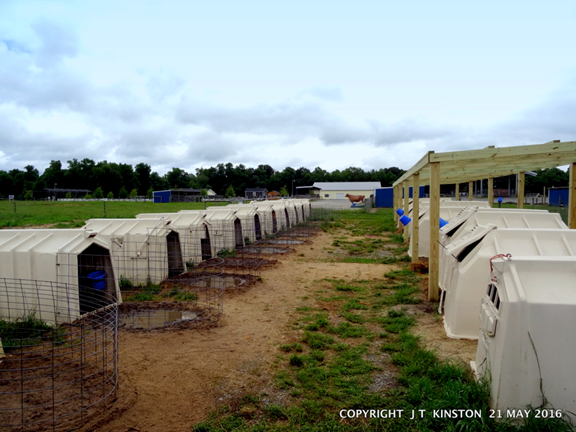
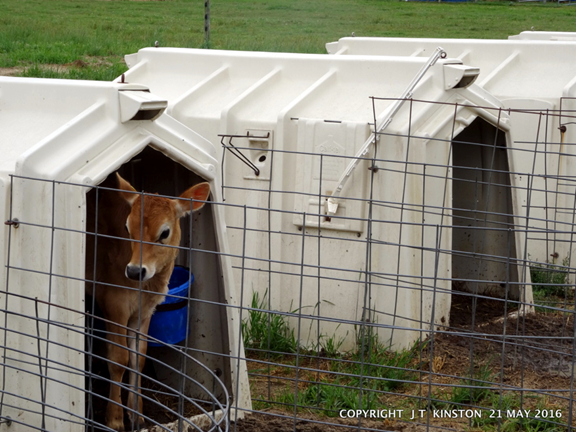
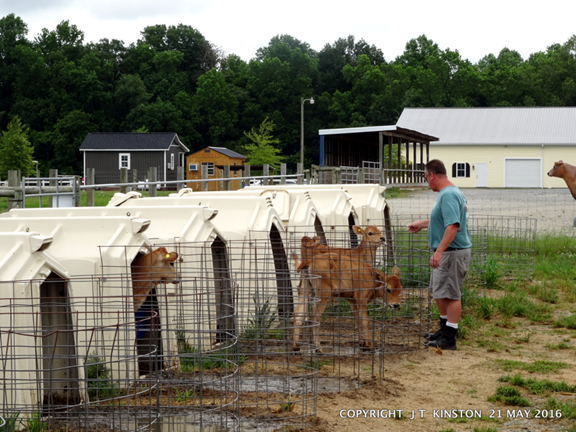
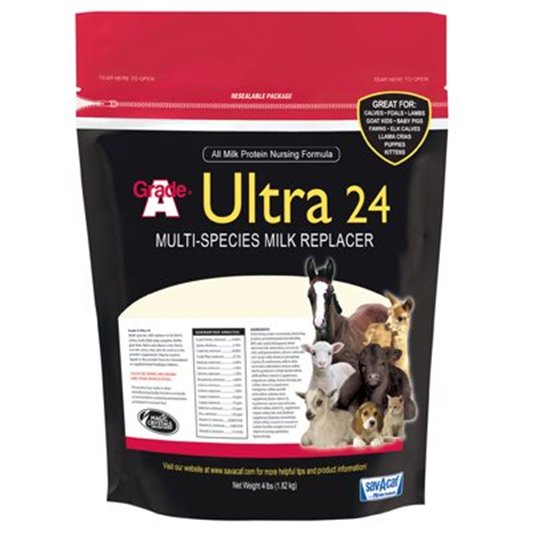
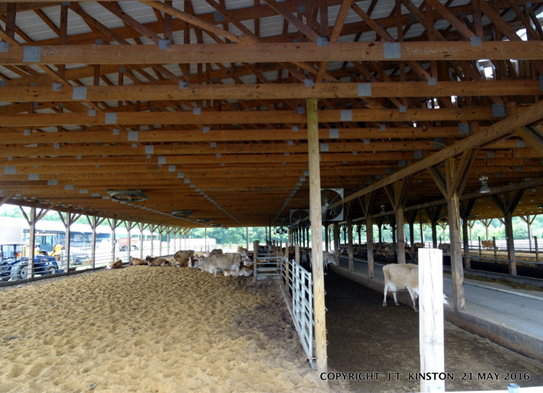
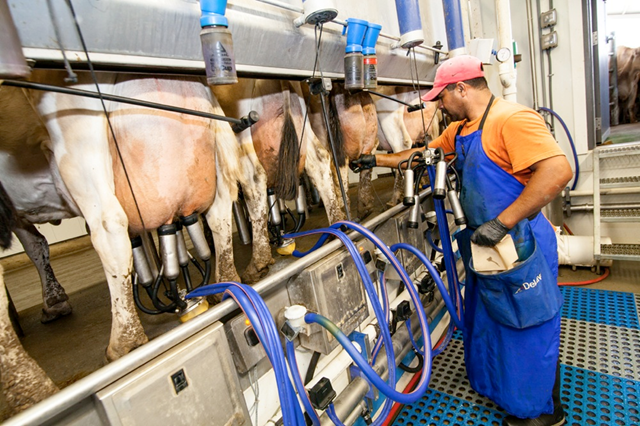
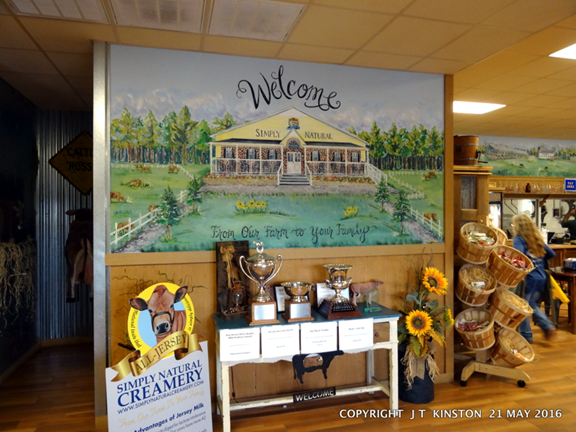
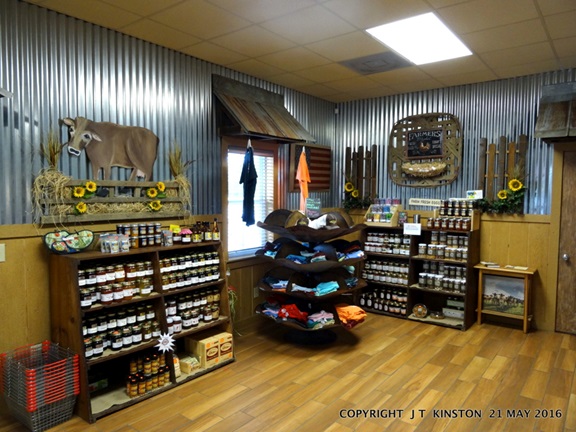
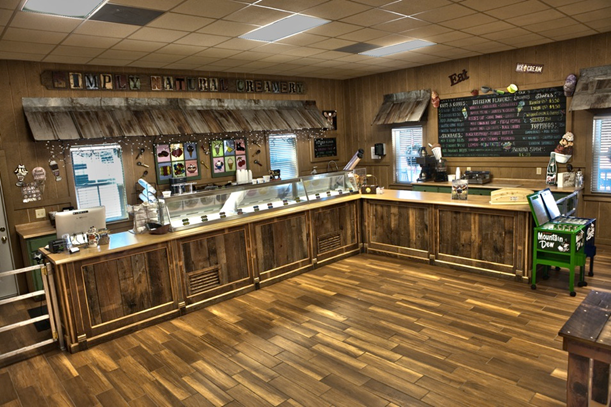
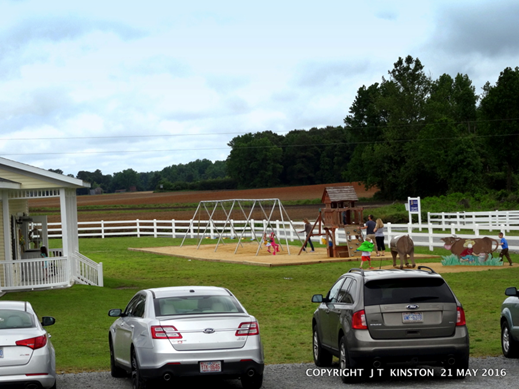
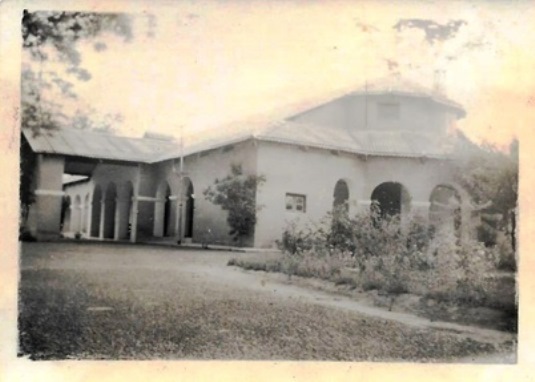
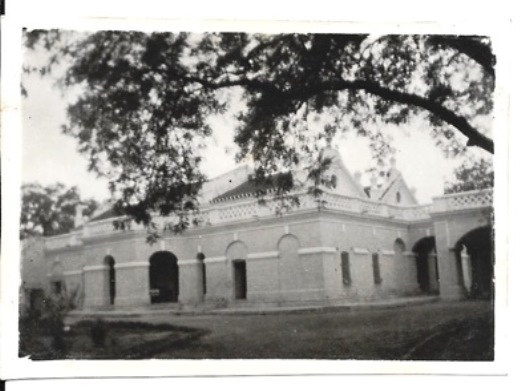
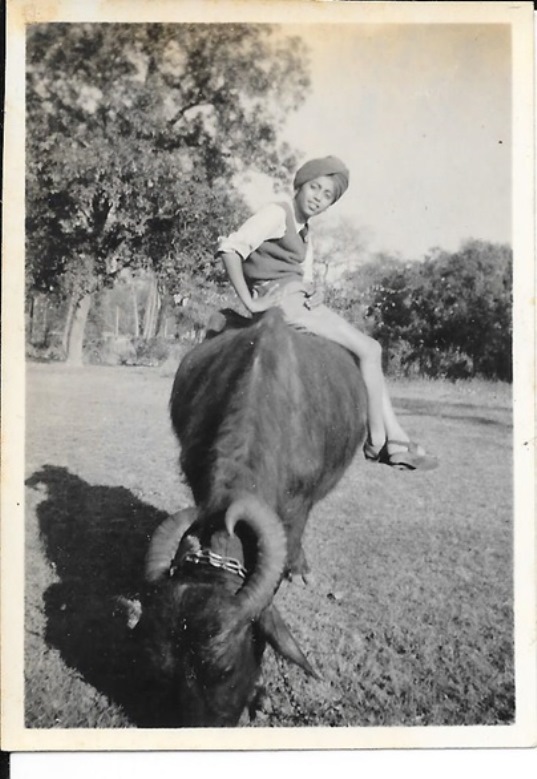




Quite revealing story.
Here in UK we are not that severely into ” factory methods” of farming.
In USA it is all about productivity per square kilometre and aggressive farming methods.
Due to being so far north and daylight in summer months lasting almost 20 hours in summer time the cattle graze outdoors. So also sheep .
And when a major new road cuts into farmland , traffic lights are introduced to enable the farmer to activate it to get his animals for milking .
Scottish fruit berries are highly prized ..again due to long daylight hours in summer.
In ABERDEEN esp we r very lucky. The local dairy makes its own ice cream, butter ,etc and it is v good.
” Battery farming of chickens ” is being phased out. Chickens are now allowed to go outside .
Now it is all about ” food miles ” to cut down on use of fuel and CO2 emission.
Buy local has become the slogan.
U.K. and in Europe, local markets exist…..local farmers bring their produce to market. Aberdeen has one too.
EU has a lot of legislation regarding almost everything. Hence most of the farmers voted to come out of the EU. We will know only in two years time what the full outcome of BREXIT will be . EU has said that negotiations can start only after the severance happens . There is talk that EU will be officially notified in 2017.,and severance happens two years from the date of notification.
And there is talk that the House of Lords may veto BREXIT ..we will know only after the summer recess.
Dear Surjit ji,
I found it quite interesting and very organised Diary in USA. It will be nice to know how are conditions prevalent in India.
With regards.
Ghansham
Thank you sir,
Your articles not only contain great informative vale but transport the reader into another era and nostalgia.
Like many people of our times we also had a cow and poultry at our home.
I often wish to recreate that now but despite all the resources available now..i have not been able to do it.
i think i m getting old.
thanks again and regards
Dear Jauhari,
I don’t know who said it, but it is true that ‘beauty lies in the eyes of the beholder’
Many people read what we send, but not many have expressed their appreciation the way you have!
I am hoping to receive something from you…
Surjit
Dear Generalsaab,
You may not know who I am but I do read your blogs every time I can and enjoy it very much. I live in Chennai and am a biotechnologist working with plants and animals. I thought I should mention that its not just cows and chicken that are subjected to such stress full lives by farmers all over the world. Fish, pigs and other animals we eat have to endure so much before they are ‘tabled’.
I have a degree in animal husbandry and feel it is my duty to try and correct things for these animals we raise for our stomachs. In our desperation to make animal husbandry profitable we have been feeding animals all kinds of chemicals in their feed mostly antibiotics and hormones to get them to grow faster. Man has finally realised that the antibiotics and hormones are ending up on human plates and causing untold damage to humans! I guess it is poetic justice for what we do to those lovely creatures. I work with algae and my team have recently discovered an algal species which contains huge quantities of beta glucan which is a soluble polysaccharide that boosts the immune response of animals that consume beta glucan. This means we can reduce the amount of anti-biotics and hormones in animal and fish feed and save our own species the problem of antibiotic resistance. We have also found ways of feeding fish and shrimp natural live feed rather than compounded feed and in this way we have reduced mortality in the ponds by almost 25%. This is akin to what the ‘Simply natural dairy’ folks are doing.
There is hope yet for mankind and animalkind.
Warm regards and happy blogging
Sailendra Bhaskar
Dear Mr Bhaskar,
Ensconced in you words is a ray of hope!
We are sanguine that your generation will find a solution to the problem. Generation of wealth cannot be the only goal of life. We have to aim at something higher and noble.
May the Lord grant more strength to your elbow!
Why don’t you send us a piece for our blog? You write very well.
Surjit
Dear veerji
Greetings.
Thank you for the lovely letter that you sent me. It will be a prized possession,
I am attaching a newspaper clipping. I am getting some photographs also. Will get them delivered
Regards
Jaideep
Sir
Nice insight to what we human beings are. It’s very sad and disturbing.
Recently, I have joined Presidency University, a new one in Bangalore. Most of the sr. faculties are from BITS and it’s a type of rejoining.
Convey my regards to Madam
Dear Surjit,
A very lucid description.
We visited a farm near Kandy in Sri Lanka recently. They follow similar processes.
Regards,
S Rishi
Dear sir , Thanks a lot. In 70 years we have not built toilets in village schools. we have only contributed towards making our MPs and ministers rich who trade charges and slaps ( AAIDMK MP ). A long way to go. pl be in touch.
with regards,
Bala
Very interesting.
Very interesting article but for some reason my comment is not posting. Here it is for your pleasure:
Lovely article. I don’t accept that milk replacer is better than mother’s milk but feeding it must be more logistically convenient I suppose. I wish the author had asked that question. Would have been interesting to know how they would have answered it.
Lovely photo of your brother on his buffalo. One of my childhood memories is of riding the buffaloes of my friend – Murrah buffalos – to the tank for their swim and sitting on them as they took to the water. Then we would swim and lounge around until the buffalos were ready to go home and then we rode them home.
Thank you for the very nice article.
Dear Mr Mirza Yawar Baig,
Thanks for your comments.
Milk replacer is not claimed to be better than cow’s milk. Raw milk is considered unsuitable because of bacteria etc. So, the best option is considered to be pasteurised milk. Milk replacer is used to reduce the cost.
Regards,
J Thomas
Thank you Sir for sharing.
regards
Harikumar
Thank you. An educative account for me.
Regards & best wishes.
Thank you Sir, for the nice write up.But the comments are not getting uploaded, despite repeated attempts.
rgds
col vrk prasad
Thanks.
As usual Wg Co Thomas is at another adventure. God bless him.
Thanks Surjit. Enjoyed reading the blog and your add-on nostalgic notes. Impressed by use of technology with a human heart in exploiting the animal-resources.
Why cant we rewind ! It was good to see SCC Thomas.Do please convey my regards to him. Your house in Meerut looks like the one Guddo and I lived in 94 -95 now called RAM House. Possibly.
Regards.
Madan
Thanks for sharing Sir
Interesting.
Thanks Surjit & Tommy.
Sir
Both cows and chickens are human food and human population is now in excess of 7+ billions. Modern techniques are designed to get maximum value from these animals as human food. Period. These animals are not necessarily pets to be adored like dogs are in the US and some other countries. En’f said.
Kishan Bhatia
Hi Joe,
Really very interesting.
Mrs Thomas is very keen to see the entire dairy farm.
Thanks,
Amar jit.
Dear Friends,
Very thought provoking! Request all to open the link & read in full. Sure to remind of your own days gone by!
Forwarded to all his friends.
Joseph Thomas Sahib, u r spreading propaganda. U were taken on a “show tour” the exact same type the Nazis created to show the Red Cross how Jews in camps were being treated. The reality was the Jews were being worked to death and executed in places like Buchenwald, which were hidden from the outside world. The dairy industry is a deeply abusive industry. Have u seen how loving dogs and cats are toward their litters? Do you believe a cow has less feeling for its new-born calf? The baby is separated from mother because we want the latter’s milk. The traumatized male calves will be slaughtered at age 8-12 weeks for veal. The female will be reared for reproduction. She will be raped continually, to produce babies. She will endure the trauma of separation each time after birth. This is her life. When she reaches stage when she can’t reproduce, she will be slaughtered for meat, the type used for sausages, etc.
Raj
Dear Surjit,
Thank u for sharing this note on a visit to a Natural Dairy Farm, which is interesting.
Sundara Rao
A very well authered article, that brings out usage of improved/modern methods of dairy farming. Nothing can replace mother’s breast milk directly fed. No amount alternatives/substitutes can replace mother fed milk. This directly feeding the calves appears to have be done away here. My father while posted at KGMC Ajmer (1957 -1959), before posting to Delhi, had ensuerd that we have good quality milk. So a milk giving cow was in our bungalow opposite the KGMC. We had lot of milk preparations available for our good health. At times we enjoyed the DHAR of milk directly into our mouths when the cow was being milked. Before & after milking the cow the calf was fed directly by letting loose.
Hats of Gen Surjit for producing his brother’s picture on buffalo. These are things of the past. GUZRA HUA JAMANA AATA NAHIN DO BARA..
A nice write up , a very humane way of dealing with cows in my view no matter what others say.Compliments to the author for the informative piece and to the General for the brief trip down the memory lane.
At the outset, I want to let everyone know that I am Joseph Thomas’s brother, so you may or may not choose to believe the comments that I am adding. I live in Arizona, USA.
This dairy farm with 3700 acres is a (wonderful) exception, not the norm for dairy farms that I have seen. My view is that “Simply Natural” has made a large scale version of all of the practices and advantages of a small family dairy farm.
I have visited several smaller farms when I lived in Michigan, (spent the whole day once with the farmer and family) and I also spent a week in 2004 at a dairy farm in Idaho for a brand name milk producer, where our company was installing a new centrifuge machine for the production of low-fat milk. In every instance the cows were housed in large metal sheds, and were herded outside once or twice a day, mainly for exercise. Some of the farms have ample space, most don’t.
I have noticed occasionally that there are other spacious dairy farms similar to “Simply Natural,” but I have not visited one.
The Idaho farm (about 1500 cows) was used for the production of organic milk; the farm managed and cultivated their own crops and feed, so that they had strict control of the diet and the feed for the cows. Recycling, compost heaps, and manure pits were all managed in different areas of the farm. I was most impressed with the continual cleaning that they practiced everywhere in the facility; even the machinery (all stainless steel) was sprayed and washed down twice each day with hundreds of gallons of water, and that wastewater was then directed and used for the irrigation of their crops.
The use of hutches for calves is very common all across the country. Even those farmers who only have one or two calves use a hutch.
A final tidbit about whole milk and no-fat milk that I learned in Idaho. All of the milk produced by the cows was run through the centrifuge, and separated into NO-fat (<0.1% fat) milk and cream. There is no low-fat or whole milk stored after production. When the delivery trucks are loaded with milk later, if they require 2% or whole milk, the predetermined amount of cream is added to the truck at the very end. The mixing and blending of the cream and milk occurs naturally while the truck goes down the highway. (I'm not making this up). I was told that this is what all the milk producers do. Now you know how we in America produce "homogenized" milk.
A well simple informative guide as if you are taken there and briefed. We should follow the informative and things warranted to be practiced in India.
Wonderful Photographs.
Dear WgCo and General;
Sir(s);
A very interesting and informative article on North Carolina based Natural Dairy Farm. I was a bit surprised to learn that calves separated from the mothers don’t miss each other.
The olden memories captured in pictures by the General were very interesting.
Thanks;
KP
Interesting write-up with information not everyone is familiar with.
I however do not believe that the mother does not miss the new-born calf because I was lucky enough to have seen milch animals at home as a kid. A cow licks and rubs against a calf for minutes and longer. Milk replacer too is unconvincing.
But no one can deny that despite all the above cows must be much better off than they are in India!
Thanks, Gen Ashok Coomar. Personally, I agree with you. However, I am not an expert on the subject.
Pasteurised cow’s milk is considered the best feed for calves. However, milk replacer is used to reduce costs.
regards,
J Thomas
Joseph Thomas Sahib, u r spreading propaganda. U were taken on a “show tour” the exact same type the Nazis created to show the Red Cross how Jews in camps were being treated. The reality was the Jews were being worked to death and executed in places like Buchenwald, which were hidden from the outside world.
The dairy industry is a deeply abusive industry. Have u seen how loving dogs and cats are toward their litters? Do you believe a cow has less feeling for its new-born calf? The baby is separated from mother because we want the latter’s milk.
The traumatized male calves will be slaughtered at age 8-12 weeks for veal. They will literally live their short stay on earth without knowing mother’s love.
The female will be reared for reproduction. She will be raped continually, to produce babies. She will endure the trauma of separation each time after birth. This is her life. When she reaches stage when she can’t reproduce, she will be slaughtered for meat, the type used for sausages, etc.
Raj Chotrani, I agree with you that the world will be a better place if all of us become vegetarian.
Since you are opposed to dairy farming altogether, I trust you do not consume any milk products. If we reduce the demand for milk and milk products, the dairy industry will be forced to shut down.
Dear Wg Cdr Thomas,
Thanks for the informative and a wonderful piece!
Sincerely,
Wg Cdr SS Krishnamurthy
Gen. Surjit & Joseph Ji,
The post evoked my gratitude to The Almighty, for granting me the comradeship of the noble beings like you.
Admirable choice of cause & subtle message.
With loving regards.
soorkhan
A wonderful conducted tour.Hope we also adopt some of the techniques in our country.Every visit is a learning process.We have constraints of land but innovation can be attempted to succesfuly.
Well written article and very informative. It is well known that a lot of scientific means and modern technologies are adopted in dairy farming, but getting an insight for a crisp reading is appreciable.
Thanks to the authors
Never thought of visiting a Working Dairy. Next time I am in states. Americans always think of milk like juice that it comes in bottles or containers.
3500 acres…It can only happen in USA. The cost of land will make it prohibitive in India.A friend of mine has taken to Milk and has 10 acres in Hapur. We are one of his customers. He is extremely happy with his venture. For some reason he has named his product very french sounding. O’Leche.
Interesting read.
Lovely article. I don’t accept that milk replacer is better than mother’s milk but feeding it must be more logistically convenient I suppose. I wish the author had asked that question. Would have been interesting to know how they would have answered it.
Lovely photo of your brother on his buffalo. One of my childhood memories is of riding the buffaloes of my friend – Murrah buffalos – to the tank for their swim and sitting on them as they took to the water. Then we would swim and lounge around until the buffalos were ready to go home and then we rode them home.
Thank you for the very nice article.
Stimulating read! A fascinating example of ‘technology with a heart’, even when dealing with cows and calves!
Compliments to the Author and Surjit for the nostalgic fillers.